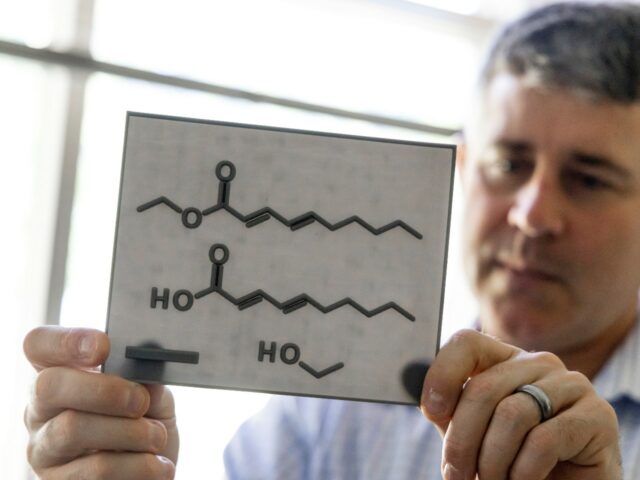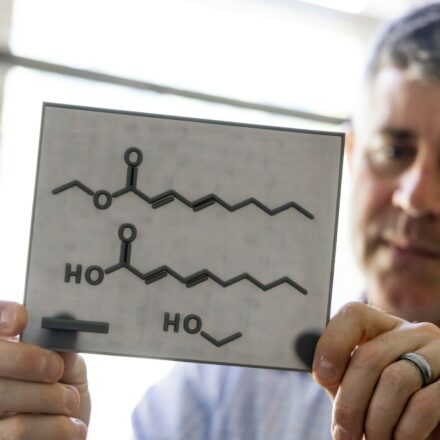By Payal Dhar, contributor
“Nobody can see atoms,” says Hoby Wedler, a chemist, educator, entrepreneur, and advocate for blind and visually impaired students in science. And this makes him wonder: Shouldn’t studying chemistry then be possible for blind and visually impaired students? A lack of accessible resources poses the biggest challenge.
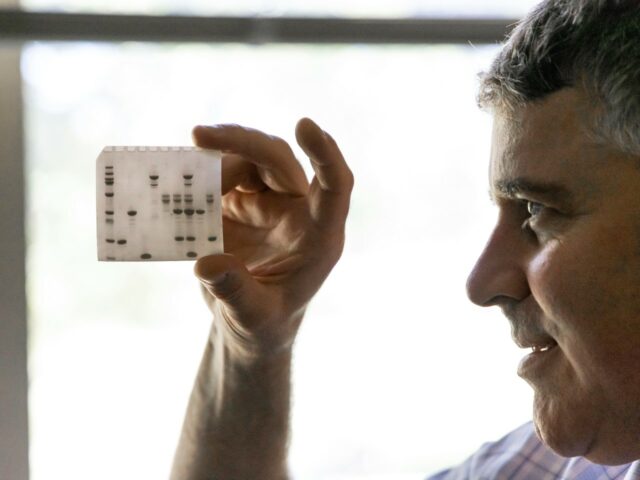
Wedler, who has been blind since birth, earned his Ph.D. in organic chemistry in 2016. “During my graduate career, I did a lot of work to make chemistry more accessible to me,” he says. This included drawing figures with a pen, then flipping the paper over and tracing it to form a thick raised line. “And while this still works really well [for] easy diagrams, they are not permanent.”
Finding solutions in everyday tech
“Being a blind chemist is not always easy,” says Mona Minkara, a researcher in the bioengineering department of Northeastern University in Boston. A lot of the software she needs in her computational lab wasn’t designed with accessible features. Plus, “many people have doubted my abilities throughout my education.”
Minkara, who also collaborated in the lithophane study, says everyday technology, such as smartphones, is extraordinarily helpful in supporting blind and partially sighted people. For example, using integrated assistive features on smartphones speeds up tasks that would be much more time-consuming for her as a blind researcher compared to a sighted one.
At present, accessible materials are fairly sparse, Wedler says. Some of the techniques he’s used for tactile graphics include Swell Form figures and Pictures in a Flash. He also used a lot of 3D printing as a graduate student. Then, there are molecular modeling kits that both sighted and blind students can use. Minkara herself has used modeling clay or hot glue guns to make tactile graphics.
“There isn’t much out there, though, for blind students to be able to draw their results and then present them back to their instructor,” Wedler says. One of the hardest things for blind scientists in general, especially in fields that rely on a lot of diagrams, is being able to read the literature, he adds. “And because authors all publish their figures differently, and they’re in different formats, it’s very hard to glean enough information from the caption of the figure to really understand what’s happening.” For this, scientists often have to make use of assistants and readers, that is, people who can assist scientists and students to help them read journal articles.
Visualizing without seeing
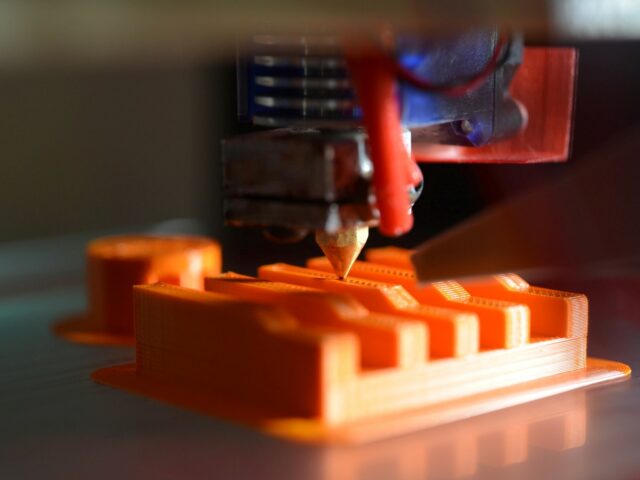
In search of better solutions, Wedler, along with other blind and sighted collaborators, recently co-authored a study that looks at 3D-printed lithophanes as a means of creating diagrams and other figures that can be universally visualized, irrespective of level of vision.
Lithophane comes from the Greek lithos (stone) and phanēs (appearing) but has nothing to do with stones—or Greece, for that matter. Dating back to the Chinese Tang Dynasty in the sixth century, it is more accurately described as translucent porcelain. Originally, these were thin, delicate engravings in porcelain or wax that appeared opaque at first glance but lit up in depth and detail when held against light.
Led by Bryan Shaw, a professor of chemistry and biochemistry at Baylor University, researchers analyzed whether sighted and blind participants were able to interpret the same lithophane data by sight and touch, respectively.
If you’re studying in a group, a blind student can feel the lithophane, and a sighted student can hold the same lithophane up to a light and see exactly what the blind student is feeling.
— Hoby Wedler, chemist
In recent years, 3D printing has given a new lease on life to lithophanes, and this is what Shaw and colleagues used in the study to create five different lithophanes of gel electropherograms, micrographs, electronic and mass spectra, and textbook illustrations. They are really inexpensive, less than $10 for a full-page visual. “They’re really easy to create,” Wedler says. “Basically, we design an image, and then we use software to create the lithophane, which then gets transferred immediately to the 3D printer.”
The researchers found that participants were able to interpret the images by touch or sight at almost 80% overall accuracy. In fact, lithophanes can be very useful in any classroom setting where visual diagrams are needed, Wedler points out. Unlike existing tactile graphics, Braille diagrams or tactile models, which tend to be low-resolutions, lithophanes can be incredibly detailed, with video-like resolutions. “The amazing thing about it is that if you’re studying in a group, a blind student can feel the lithophane, and a sighted student can hold the same lithophane up to a light and see exactly what the blind student is feeling,” Wedler says.
Accessible by design
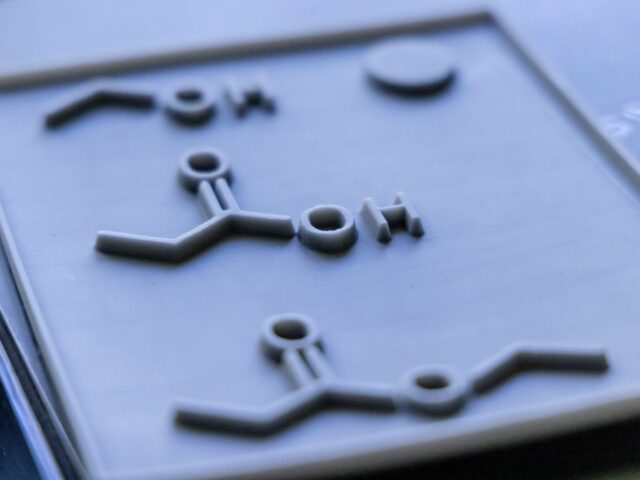
For accessibility to be mainstream, it needs to be more than an add-on; it needs to be baked into the system. This is what drove Julia Winter, a former high-school chemistry teacher, to start Alchemie, a company that develops digital learning tools for young STEM learners. Alchemie’s approach is to be accessible by design, and their apps allow blind and low-vision students, as well as sighted ones, to learn independently using multisensory, augmented reality. (Winter was awarded the James Bryant Conant Award, the American Chemical Society’s highest honor for a high school teacher, in 2016.)
To help students and scientists to move around and navigate spaces such as laboratories and classrooms independently, Daniele Faccio, a researcher at the University of Glasgow, believes real-time scene-monitoring technologies might be useful. Faccio and colleagues conducted a series of workshops with deaf and blind participants to demonstrate a proof of concept, using mmWave radar transceiver and a haptic feedback array.
“If the environment is fixed, for example a lab space, then we already see that we can include AI techniques that can account for the known objects in fixed scene and then provide information about anything new, for example, people moving around or even simply a chair that someone has moved,” says Faccio. “I think that, with some extra work, there is space for a lot of improvement that could build upon this scenario.”
The social model of disability
Reframing disability—whether blindness or any other—as something that is created by society, by social or attitudinal barriers, puts the onus on society to make spaces accessible by default.
“I ask my sighted colleagues to consider the accessibility of written materials, to elevate the inclusivity of lab environments holistically,” Minkara says. “For example, if I am attending a group meeting with a presentation, it is extremely helpful [to have] the slide deck in advance, including alt-text to describe the pictures and graphs [so] I will have context to anticipate group discussions around any data that would otherwise be inaccessible to me.” Word documents are also more accessible than PDFs as screen-reading software often interprets text in the latter as an image, which hinders reading.
The media, says Hoby Wedler, could help by focusing on success stories: “Just writing about people who have figured out how to do things, and explaining how they have done them, provides good resources for anyone to be able to apply it at their own institution or for themselves.” That is more helpful than, “Wow, look at this amazing blind chemist,” he adds.
“Blind people can do whatever they want, given the right technology and the correct support,” Wedler says. “So if we just work with students to figure out how we can best support them, they will be able to succeed the same way sighted students will. But we need to work with them as a team, rather than thinking about accessibility as a challenge or a problem… Anything is possible with the right mindset.”
Lead photo of a lithophane courtesy of Lori W. Fogleman.
